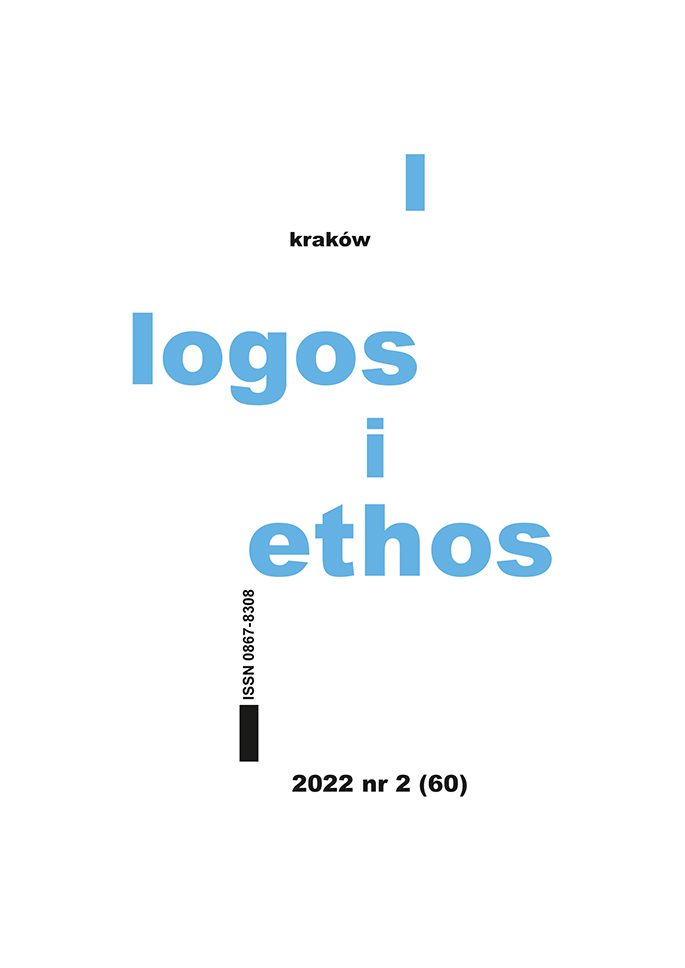A Kingdom of (Un)used Opportunities. A Few Thoughts on Roman Ingarden’s Literary Work Theory in Practice
DOI:
https://doi.org/10.15633/lie.60208Keywords:
Roman Witold Ingarden, phenomenological rite, interpretation, literary work theory, Cyprian Kamil NorwidAbstract
Roman Ingarden’s literary art work theory did not manage to gain wide popularity in research practice, which has been influenced by its supposedly hermetic and anachronistic nature. The article refers to the three phases of its reception, noting that in the twentieth and twenty-first centuries, Ingarden’s phenomenological view of literature was a touchstone of just a few, but practical investigations, devoted, for example, to Norwid. Is it because of the fact that the poet’s language exhibits properties that can be easily analysed on the basis of Ingarden’s theory? And if so, isn’t Ingarden’s theory reserved for a specific kind of creativity, an artistic language with a clear phenomenological rite? How should this phenomenological rite be understood? The second issue would be the question of the interpretation of a literary work and the possibilities opened up in this respect by Ingarden’s literary work theory. Are they modest and limit the researcher of literature, or do they activate such a mechanism of looking at literature that produces the most significant results? This part of considerations was supplemented with conclusions from the phenomenological interpretation of Shakespeare’s comedy The Taming of the Shrew.
References
Garlej B., Czego o poskramianiu wartości dowiadujemy się z „Poskromienia złośnicy” Williama Szekspira, w: Estetyka Romana Ingardena jako podstawa badań nad korespondencją sztuk, red. B. Garlej, B. Kuczera-Chachulska, A. Tyszczyk, Warszawa 2022, s. 103–122 (Zeszyty Estetycznoliterackie, 4).
Garlej B., (Nie)trzymane w ryzach synekdochiczności wyglądy, w: Estetyka literacka – Arcydzieło – Ingarden, red. B. Garlej, B. Kuczera-Chachulska, Warszawa 2015, s. 53–67.
Garlej B., Warstwowość dzieła literackiego w ujęciu Romana Ingardena. Koncepcja, rozwinięcie, recepcja, Kraków 2015.
Głowiński M., Norwida wiersze-przypowieści, w: Cyprian Norwid w 150-lecie urodzin. Materiały konferencji naukowej 23–25 września 1971, red. M. Żmigrodzka, Warszawa 1973, s. 72–109.
Hester M. B., Obrazowość i wolne skojarzenia, tłum. J. Japola, „Pamiętnik Literacki” 62 (1971) nr 3, s. 235–246.
Ingarden R., Studia z estetyki, t. 1, Warszawa 1966.
Kuczera-Chachulska B., Wstęp, w: A. Mickiewicz, Wsłuchać się w szum wód, Warszawa 2021, s. 5–20.
Magliola R., „Eigentlichkeit” and „Einfall”: the Heideggerian Return «to Things Themselves», w: Literary Criticism and Philosophy, ed. J. P. Strelka, Pennsylvania 1983, s. 113–131.
Sancipriano M., Le langage de la création esthétique dans la phénoménologie, w: Ingardeniana 3: Roman Ingarden’s Aesthetics in a New Key and the Independent Approaches of Others: The Performing Arts, the Fine Arts, and Literature, ed. A.-T. Tymieniecka, Dordrecht 1991, s. 281–293 (Analecta Husserliana, 33).
Sayers D. L., O pisaniu i czytaniu utworów alegorycznych, tłum. P. Graff, „Pamiętnik Literacki” 66 (1975) nr 3, s. 195–216.
Stefanowska Z., Norwidowski Farys, w: Cyprian Norwid w 150-lecie urodzin. Materiały konferencji naukowej 23–25 września 1971, red. M. Żmigrodzka, Warszawa 1973, s. 18–38.
Stoff A., Aksjologiczny sens konkretyzacji estetycznej w teorii poznania dzieła literackiego Romana Ingardena, w: Estetyka Romana Ingardena a praktyka interpretacyjna, red. B. Garlej, B. Kuczera-Chachulska, A. Tyszczyk, Warszawa 2018, s. 69–88 (Zeszyty – Zakład Aksjologii i Estetyki Literackiej. Wydział Nauk Humanistycznych UKSW, 3).
Sugiera M., Wariacje szekspirowskie w powojennym dramacie europejskim, Kraków 1997.
Swoboda T., Budowniczy mostów, w: R. Caillois, Odpowiedzialność i styl. Eseje o formach wyobraźni, wybór M. Żurowski, tłum. J. Błoński, K. Dolatowska, A. Frybesowa, L. Kukulski, J. Lisowski, Warszawa 2019, s. 309–320.
W świecie brzmień, Sienkiewiczowskich postaci i wartości (arcydzieł): z Profesorem Andrzejem Stoffem rozmawia Beata Garlej, „Przestrzenie Teorii” (2022) nr 37, s. 251–271; DOI: 10.14746/pt.2022.37.13.
Witkiewicz S. I., Nienasycenie. Powieść, Kęty 2018.
Wokół „Ingardena sprawy «Istoty liryzmu»” i wyglądów uschematyzowanych – z Profesorem Rolfem Fieguthem rozmawia Beata Garlej, w: Estetyka literacka – Arcydzieło – Ingarden, red. B. Garlej, B. Kuczera-Chachulska, Warszawa 2015, s. 121–143 (Zeszyty – Zakład Aksjologii i Estetyki Literackiej. Wydział Nauk Humanistycznych UKSW, 2).
Zamącińska D., Słynne – nieznane. Wiersze późne Mickiewicza, Słowackiego, Norwida, Lublin 1985.
Downloads
Published
Issue
Section
License

This work is licensed under a Creative Commons Attribution 4.0 International License.
Authors who publish with this journal agree to the following terms:
- Authors retain the copyright and full publishing rights without restrictions, and grant the journal right of first publication with the work simultaneously licensed under a Creative Commons Attribution 4.0 International License that allows others to share the work with an acknowledgement of the work's authorship and initial publication in this journal.
- Authors are able to enter into separate, additional contractual arrangements for the non-exclusive distribution of the journal's published version of the work (e.g., post it to an institutional repository or publish it in a book), with an acknowledgement of its initial publication in this journal.
- Authors are permitted and encouraged to post their work online (e.g., in institutional repositories or on their website) prior to and during the submission process, as it can lead to productive exchanges, as well as earlier and greater citation of published work (See The Effect of Open Access).

